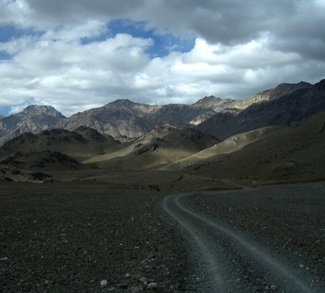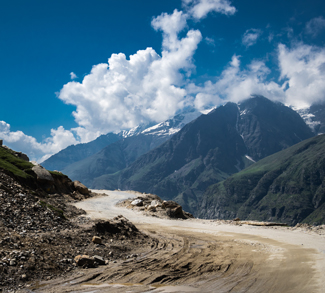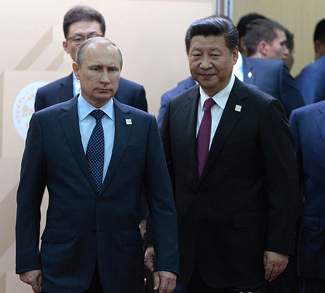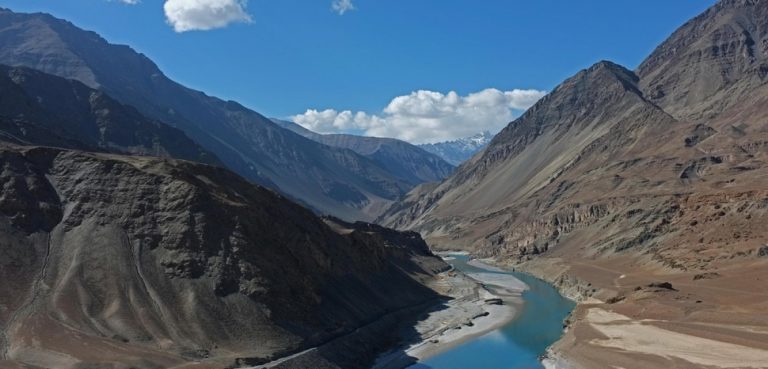It is significant that Narendra Modi, the prime minister of India, has made Bhutan his first port of call after assuming office. This is quite in consonance with Modi’s declared policy of building up cordial relations with neighboring countries. But beneath this diplomatic posture, an apparent tension clearly permeates the corridors of power in New Delhi so far as Bhutan is concerned. The twenty-first round of negotiations between Bhutan and China held in October last year in regard to disputed border areas has decided to conduct joint technical surveys in the northern sector, without laying any stress on the northwestern sector which has so long dogged the Sino-Bhutan relationship. This is likely to lead to consternation among Indian strategic experts, who may be debating whether Bhutan has already decided to give in to Chinese demands over its northwestern areas.
So far as Indo-Bhutan relations are concerned, New Delhi’s principal headache is the Chumbi Valley, an arrow-like protrusion of southern Tibet separating Bhutan from the Indian state of Sikkim. It is a tri junction of China, India, and Bhutan and enjoys unparalleled strategic importance in the whole of the eastern Himalayas. It is very near to the Siliguri Corridor, called the ‘chicken’s neck’ due to its long and narrow shape, which is India’s only gateway to its northeastern part. Any Chinese push down the Chumbi Valley resulting in control of the Siliguri Corridor would cut off all the northeastern states of India from the mainland.
Narendra Modi will go to Bhutan keeping in the back of his mind a report from the Research and Analysis Wing (RAW), India’s external intelligence organization, which says that the People’s Liberation Army (PLA) of China has recently built an all-weather road from Gotsa to Lepola via Pamlung in the disputed northern sector of the boundary between China and Bhutan. Nothing more of the RAW report has come to light, and it is not known how much of a transgression, if any, China has committed in this regard.
Any Chinese push down the Chumbi Valley resulting in control of the Siliguri Corridor would cut off all the northeastern states of India from the mainland.
In 1954, China first published a map claiming considerable Bhutanese areas. In 1958, it not only published another map claiming even larger areas of Bhutan, but forcibly took possession of considerable amounts of territory. This made Thimphu turn to Clause 2 of the 1949 Indo- Bhutan treaty, which stipulated that Thimphu would be guided by India in its conduct of external relations. In 1962, Bhutan made its southeastern part available to the Indian army for safe retreat after it was vanquished by China. Aggressive postures by China continued and it was only in 1984 that the two countries opened negotiations for border settlement. Ultimately, Beijing agreed to renounce its claims over 495 square kilometers of areas in the north, but continued to stake claims to the 269 square kilometers of areas in the northwest, which are adjacent to the Chumbi Valley.
The reason behind China’s insistence on these areas is obvious. Through the Chumbi Valley, China can conduct pincer operations to cut off India’s northeast, and then by claiming the Siliguri Corridor it can threaten the city of Kolkata and the whole of eastern India. But at only 30 miles wide in its narrowest stretch, the valley is extremely narrow for military maneuvers, so Beijing has been trying to expand the Chumbi Valley by incorporating the neighboring Doklam Plateau of Bhutan into it.
There is every indication that China will leave no stone unturned in trying to gobble up the contested Bhutanese land, and its claim is no longer restricted to the Doklam Plateau alone, but touches other strategically-important neighboring areas like Charithang, Sinchulimpa, and the Dramana pasture lands. Although in 1998, Beijing entered into an agreement with Thimphu promising to maintain peace and tranquility in the border areas, it has extended road networks in Zuri and Pheeteogang ridges overlooking the Charithang Valley, thereby creating tensions. There are also reports that China has not only put forward newer claims to over 300 square kilometers of territory in northern Bhutan, but has actually taken possession of 8,229 square kilometers of Bhutanese areas in 2013. In doing so it has reportedly bumped off some forward posts of the Royal Bhutan Army. But if China ultimately constructs railway lines connecting Lhasa-Zangmu-Shigatse and Yadong (at the opening of the Chumbi Valley) then India will be presented with a real threat to its Siliguri Corridor.
It must be admitted that the present Sino-Bhutan relations transcend hawkish eyes in China on Bhutanese territories, or even the PLA’s aggressive incursions resulting in discomfort for the Royal Bhutan Army. After the opening up of the Druk kingdom and two successive general elections, a new electorate comprised mostly of young people has emerged in Bhutan, which has been showing all kinds of restlessness to come out of Indian tutelage. They are not satisfied with the mere revision of the 1949 Indo-Bhutan Treaty in 2007, but expect an independent domestic and foreign policy for their country. That Jigme Thinley, the last prime minister of Bhutan, had attempted to forge a diplomatic relation with China should be viewed in this context.
Certainly Tsering Tobgay, the present prime minister, and his People’s Democratic Party (PDP) are more favorably disposed towards India than the previous prime minister and his Druk Phuensum Tsogpa (DPT). The withdrawal of subsidies by India on petroleum products on the eve of the last general election was viewed by many as an attempt to discredit Jigme Thinley and pave the way for the victory of Tsering Tobgay. But it has to be kept in mind that China has firmly entrenched itself with several stake holders of Bhutanese politics and economy, particularly the newly emerging business class.
India is still Bhutan’s biggest trade partner. New Delhi accounts for 75 percent of Bhutan’s imports and 85 percent of its exports. India still trains the Bhutanese army through the Indian Military Training Team. But several pressure groups are working within Bhutan to divert the course of its journey towards China. A case in point was the Bhutan Post Corporation Limited’s (BPCL) decision in 2012 to purchase Chinese public transport vehicles, instead of the long standing practice of buying India-made vehicles, through an agency named Global Traders and Gangjung owned by the son-in-law of the former prime minister Jigme Thinley. The reason proffered for such a decision was the BPCL’s stand that buses purchased from the Tatas (an Indian business house) had developed trouble within one year of their purchase.
It can only be hoped that during his forthcoming tour of Bhutan, Narendra Modi will send a message that Indo-Bhutan relations will henceforth be carried on in the right spirit. In spite of off-and-on hiccups in the bilateral relationship, there has been no dearth of attempts from the Indian side to stand by Bhutan. New Delhi has already committed Rs. 4500 crores towards Bhutan’s 11th Five Year Plan which will continue up to 2018. In addition, another 500 crores of will go towards the Economic Stimulus Package. Moreover India has decided to build up a 10,000 megawatt hydroelectric capacity in Bhutan by 2020. However, the mega hydroelectric project-based economy has been resulting in a rapid outflow of rupees. On three previous occasions, India has extended massive credits to the Druk kingdom to tide over this rupee crunch.




